
Keke Kaikhosroshvili
Keke is Zavvy's expert in learning experience. On our blog, she shares experience and insights based on her studies in learning design and experiences made with our customers.

.png)
Over three years ago, Netflix ditched annual performance reviews for text boxes. If you dread sitting face-to-face with employees, this could be you.
360 feedback presents a chance to avoid the awkwardness and tension of giving employee feedback. More importantly, the weight of constructive criticism is evenly distributed.
Everyone gives input - from the top boss to the lowest-level staff. So it's not just the manager doing all the dirty work.
Keep reading this article to learn how 360-degree feedback works and how to use it to your advantage.
Together with our curators, we have created a library of actionable digital marketing resources. Personalized to your team's needs.
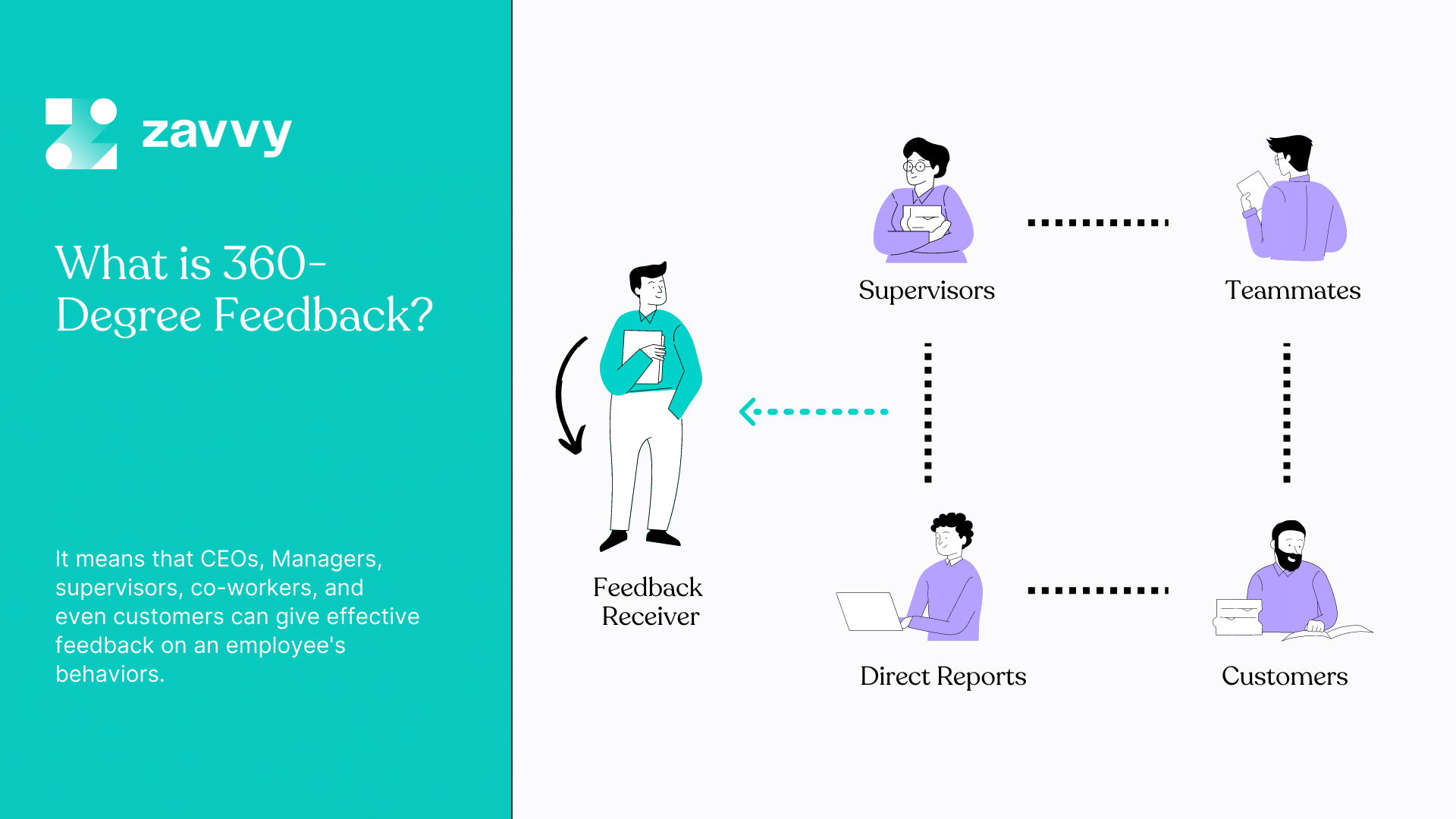
360 degree feedback (also known as multi-rater or multi-source feedback) refers to an influx of responses from every angle of the organizational structure.
That means
can give effective feedback on an employee's behaviors.
Skills they are rating could be things like how well they communicate with co-workers, leadership skills, and team spirit. The feedback process is anonymous, so there's no chance of the receiver tracing the answers back to you.
Both the 360 degree technique and performance reviews are effective methods of giving feedback. But these three primary factors differentiate them:
Many people are involved in the 360 feedback process. Everyone is free to air their opinions about staff behavior, regardless of their role in the organizational structure.
On the other hand, performance reviews involve just a manager and their direct report having one-on-one interaction.
In 360 feedback, there is
In performance reviews, the reverse is the case.
One manager and employee sit together to discuss critical achievements and incompetencies.
They also create SMART goals to improve performance and schedule a follow-up meeting to track progress.
360 feedback is often given anonymously. It's a confidence booster for employees who are afraid of their employers or intimidated by co-workers. They can be candid without the fear of their feedback coming back to bite them.
However, this is a controversial topic among People Ops experts, and we recommend at least making this decision very consciously.
With performance reviews, you need to have that face-to-face interaction with your employees. On the bright side, you can do it online using video conferencing tools.
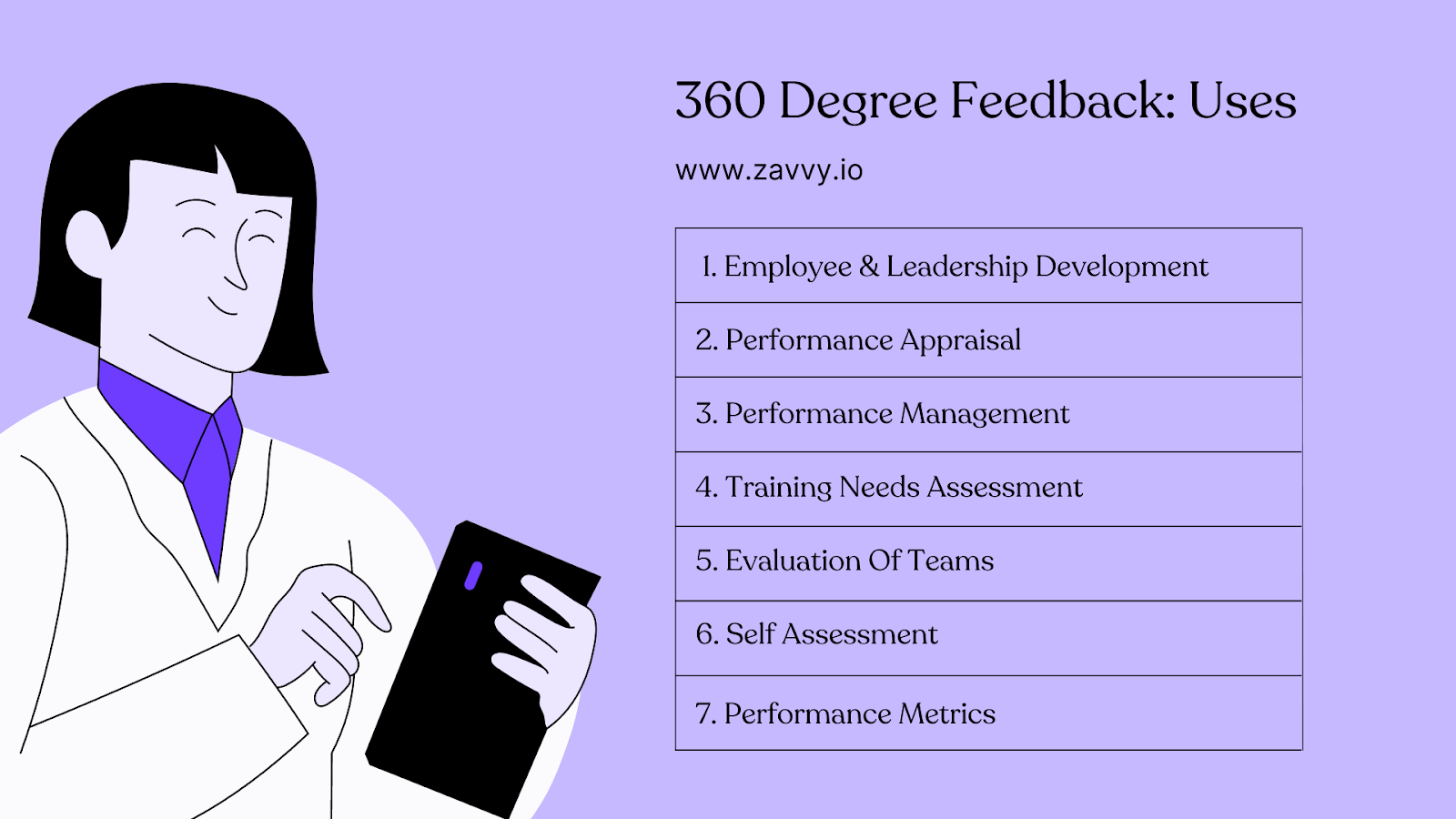
360 degree feedback helps employees see themselves through their co-workers' eyes. By collecting well-rounded views of their attitudes and behavior, they can paint a bigger picture of their strengths and weaknesses.
Think of it as a looking-glass self exercise. For example, you may feel you're an assertive leader, but your employees will describe you as arrogant.
Once this feedback piles in, you begin to look inwards and compare your self-perception and their opinions. When you realize that the majority gave similar answers, this information will prompt you to create a meaningful development plan.
But imagine receiving feedback like this:
"Thank you for always checking in on me. You make me feel like part of the team. Your concern motivates me to perform better!"
It tells you that you're a caring leader and motivates you to continue supporting your employees.
Use 360 reviews to promote an open feedback culture in your organization. The confidential nature of this system builds courage among employees and allows them to be truthful with their reviews.
Here are other scenarios where you can give feedback:
It's best to conduct 360 degree reviews every quarter of the year. This ensures consistency in keeping employees motivated and supported.
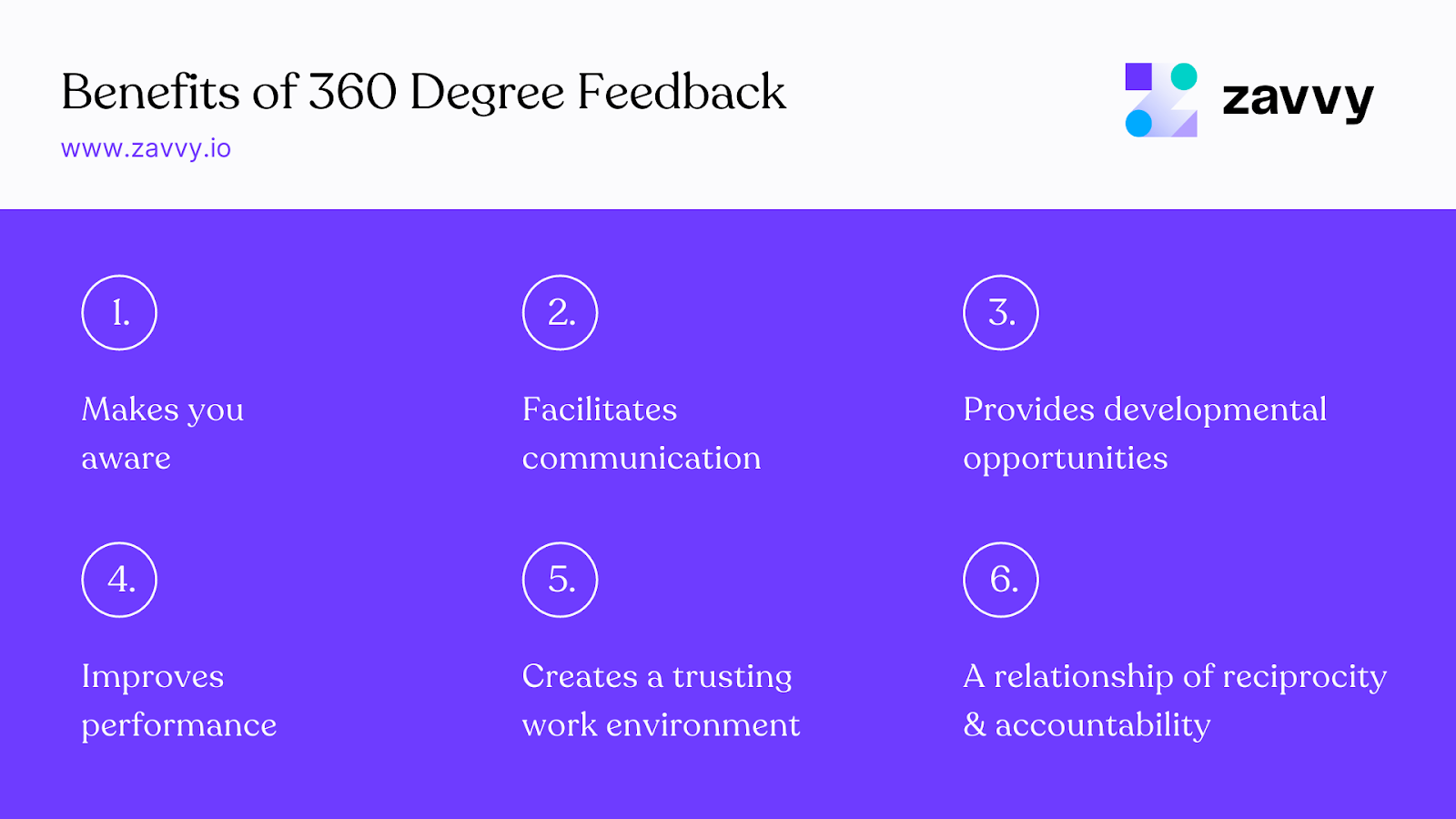
The combination of qualitative and quantitative data in 360 feedback makes it a reliable data source, unlike traditional performance reviews where you're limited to one person's viewpoint.
Once the input is over, you still have to confirm if what they say about you is valid before making any drastic decisions.
Andrew has just received the following feedback:
"I love that you try to solve problems by yourself. But sometimes, we all need help from others. I feel that It's important for you to grab more opportunities to seek counsel. That way, we can work in sync as a team."
Andrew learns that he can be such a lone ranger sometimes. With this information, he begins making adjustments to his behavior by solving problems together with teammates.
Communication becomes a two-way street where everybody hears and understands each other, leading to organizational growth.
You are your own CEO, so leveraging 360 feedback equates to investing in your career. By welcoming the opinions of your peers and superiors, you learn new things about yourself and gain new values. You can also put a stop to behaviors that are making you redundant.
360 feedback can come from anyone, regardless of skin color, age, or gender. This makes it difficult for subjects to feel personally attacked.
Also, the focus of 360 feedback is on individual skill sets such as communication, reliability, planning, and problem-solving. It's not about that one time you made an unresponsive UI design or missed a meeting.
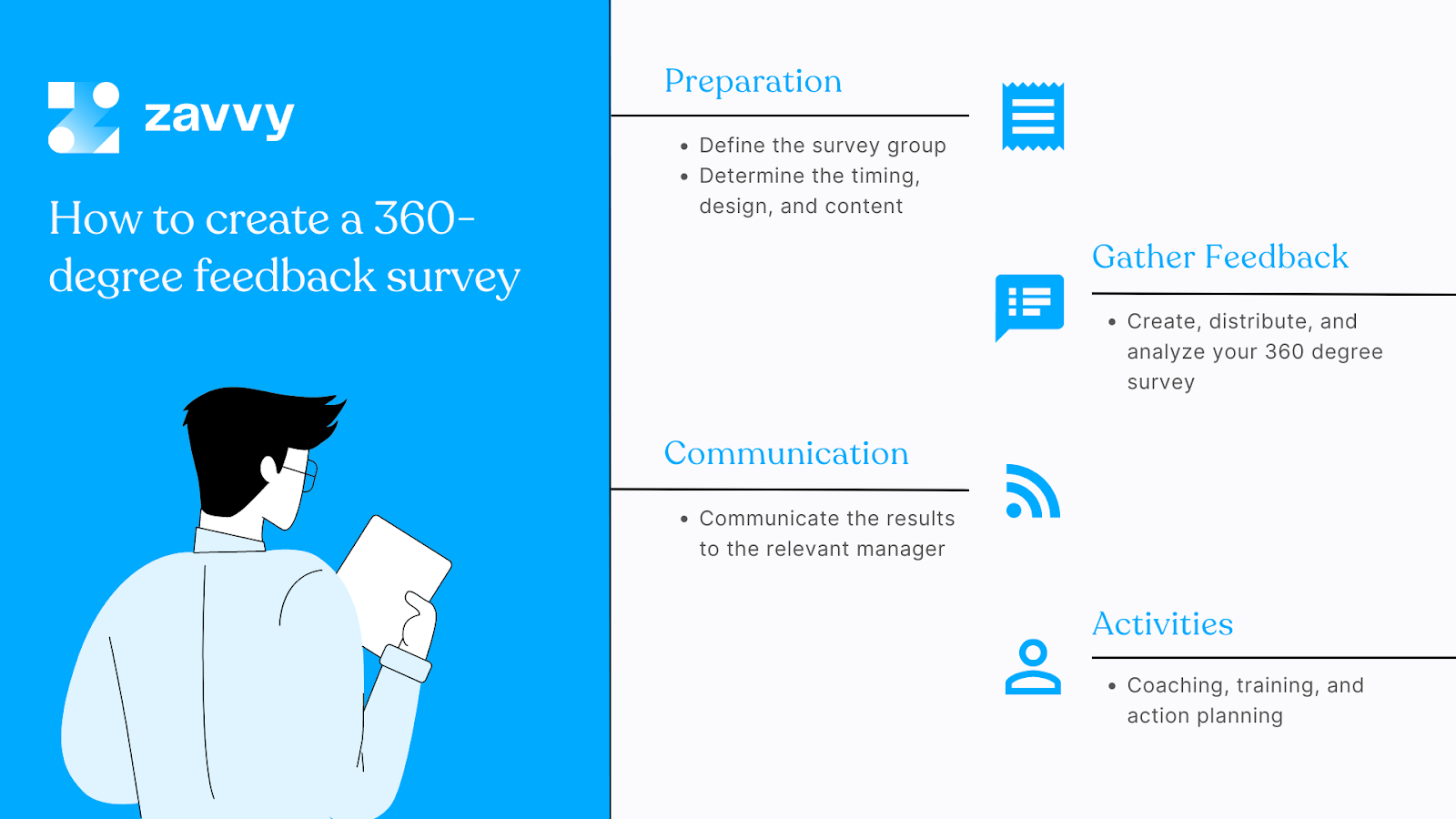
360 degree feedback dates as far back as World War II, when paper and pen methods were used to gather insights from workers.
With the advancement of technology, you now have online tools and pre-designed templates to design surveys at the click of a few buttons.
Here are five tips for creating a 360 feedback survey:
Our 360 feedback software lets you combine upward, downward, peer and self feedback all in one place. You can use it to automatically create feedback cycles across the whole organization, engage people via Slack or Teams, and create a feedback culture.
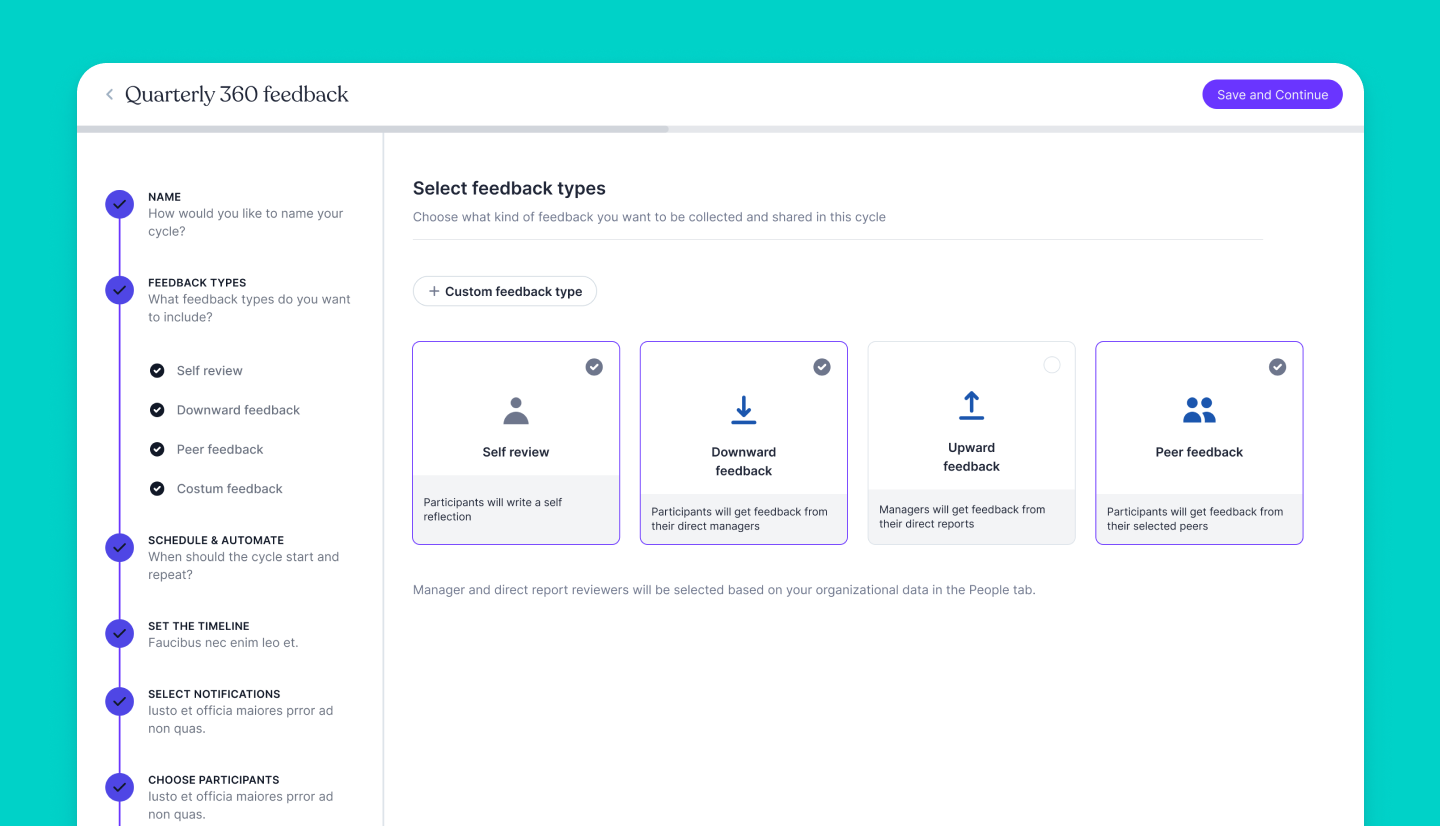
Curious? Get a demo with our team!
Avoid fluff and wordy sentences. Keep your 360 feedback questions short and straightforward.
For example,
They limit participant answers to either "yes" or "no" and fail to give enough information about the subject. Use open-ended and rating scale questions instead. Get your raters to not only give answers but also explain the reasons behind them.
For example,
"What words would you use to describe this person?"
80% of people abandon surveys halfway.
Prevent your raters from doing that by structuring your survey to contain five topics.
For example,
Under each topic, ask four 360 feedback questions.
Limit your survey to 30 questions and no more.
But that's not an invitation to create 3-in-1 questions. If your goal is to save space and time, you'd end up with the opposite result and confuse the raters.
Use estimator tools like echospan to determine how many questions you should ask your raters. Overall, your survey should not take more than 8 to 15 minutes to fill.
Let there be a balance between close-ended and open-ended questions. Don't let one outnumber the other.
Use statements like, "This employee shows strong leadership skills" to determine how many people agree or disagree.
Ask questions like, "If you were this employee, what actions would you take to improve work conditions?" to allow the raters to express themselves in their own words.
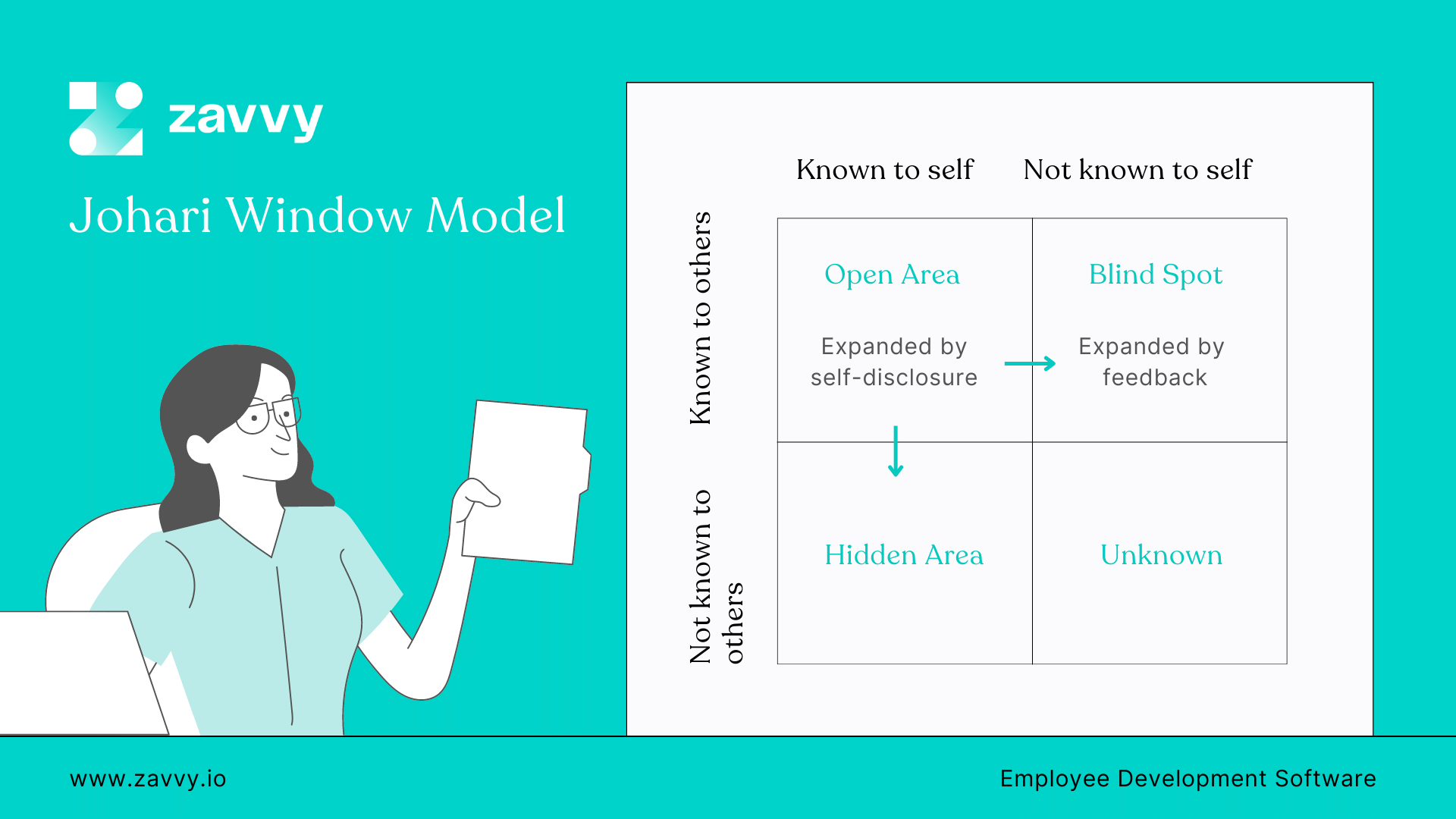
A successful 360 degree feedback opens the Johari Window. This is a tool individuals use to develop self-awareness and build mutual understanding with others. Each pane of the window represents four parts:
When you see yourself clearly through honest feedback, you develop trust for others. You begin to communicate effectively and share the hidden areas of yourself. The pane then shifts vertically to expand the open space.
Because they are still unfamiliar with co-workers, it becomes difficult to know who they really are until feedback and self-disclosure occur.
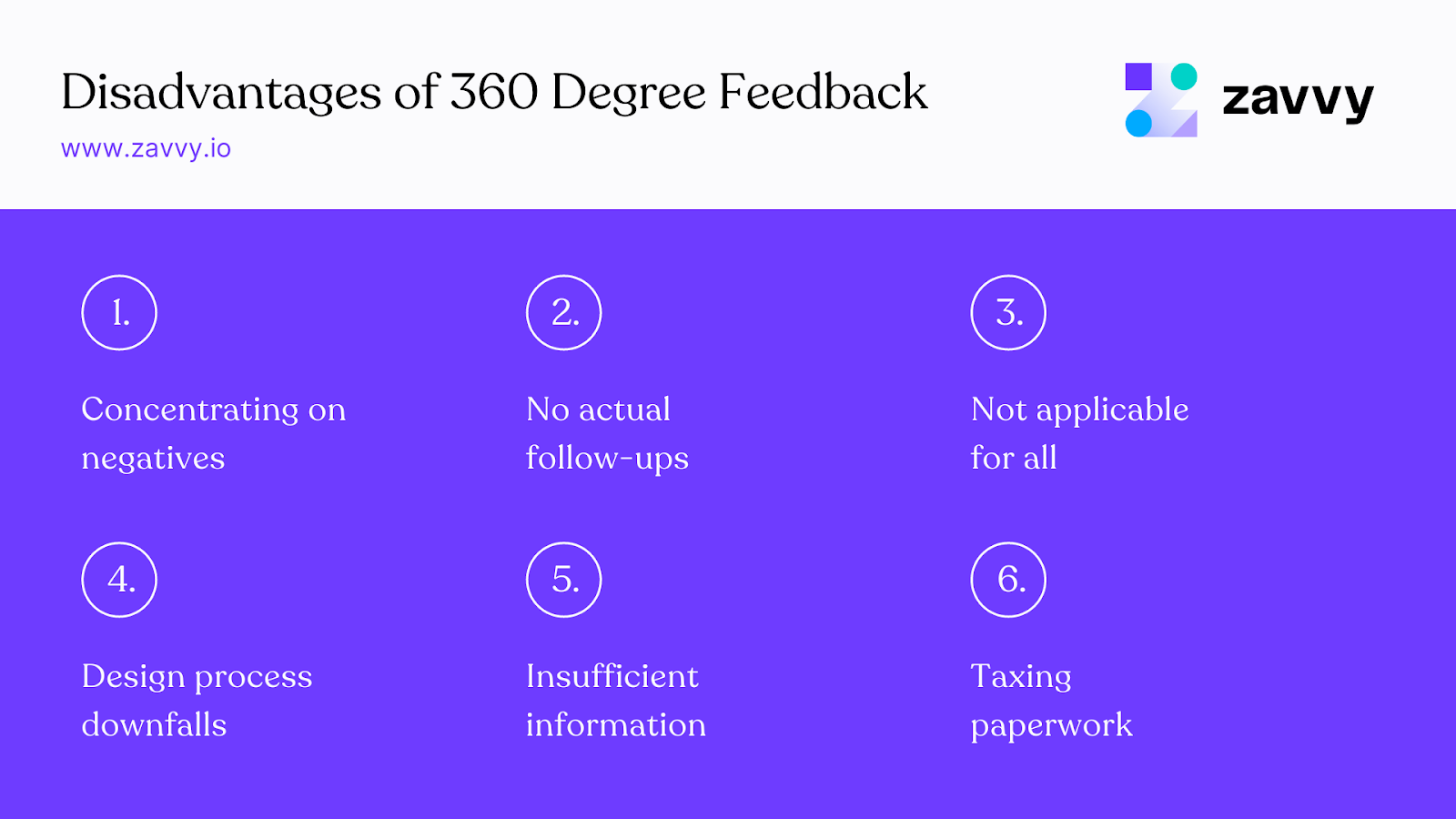
The best 360 feedback survey tool is tailored to your organization's needs as there is no one-size-fits-all model. Anything contrary to that, and you'll end up with bottlenecks. This is one factor many organizations neglect when choosing 360 degree feedback software.
Feedback manipulation is another serious issue during 360 degree reviews. Employees will be tempted to mess with survey results for numerous reasons.
For one, some organizations use 360 feedback to determine who gets promoted or kicked out. This is wrong as it can build an unhealthy sense of competition among staff. Employees will feel that by giving their peers good ratings, they'll be helping the rival.
On the other hand, employees who have formed a tight bond may want to give their "friends" good ratings so they can all stay ahead in the competition. All these factors make 360 feedback an unreliable data source, so it's essential to train employees to give 360 feedback objectively.
Be intentional with your questions. Target the skills that impact your organization most, rather than asking every question in your books. Then put yourself in the raters' shoes.
If your questions focus on the subject more than the skills and behaviors, they need a makeover. 360 feedback should be a tool for personal development and not a way for rivals to air grievances.
Most importantly, make long-term projections on each skill. Imagine the possible outcomes of the feedback and prepare yourself for what it would cost you to make the developments.
Remember that the changes you want to happen don't magically occur once feedback occurs. Work alongside coaches and co-workers to devise a follow-up plan and stick to it.
Need a hand? Our employee development and feedback tools are designed to help you configure, plan, engage and track every step of your growth journey. Speak with our experts to get started!
Upskill your team every week with the best contents and personalized recommendations.
.png)
Over three years ago, Netflix ditched annual performance reviews for text boxes. If you dread sitting face-to-face with employees, this could be you.
360 feedback presents a chance to avoid the awkwardness and tension of giving employee feedback. More importantly, the weight of constructive criticism is evenly distributed.
Everyone gives input - from the top boss to the lowest-level staff. So it's not just the manager doing all the dirty work.
Keep reading this article to learn how 360-degree feedback works and how to use it to your advantage.
Get a demo!
We'll be happy to show you around and answer all your questions.
Trusted by innovative companies



We'll be happy to show you around, answer your questions, or arrange a free trial.
Erhalten Sie eine kostenlose Demo unserer Onboarding-Software.
Vertraut von



Your Training & Development Strategy - Solved in 1 Tool.
Trusted by innovative companies



We'll be happy to show you around, answer your questions, or arrange a free trial.
Learn how Zavvy helps you drive performance, development, and engagement.
Trusted by innovative companies



We'll be happy to show you around, answer your questions, or arrange a free trial.
We'll be happy to show you around and answer all your questions.
Trusted by innovative companies



We'll be happy to show you around, answer your questions, or arrange a free trial.
Gerne zeigen wir Ihnen ganz unverbindlich unsere Plattform im Detail.
Vertraut von modernen Unternehmen



Get a demo!
We'll be happy to show you around and answer all your questions.
Trusted by innovative companies



We'll be happy to show you around, answer your questions, or arrange a free trial.
Erhalten Sie eine kostenlose Demo unserer Software für Mitarbeiterenwicklung und Training.
Moderne Unternehmen
setzen auf Zavvy


